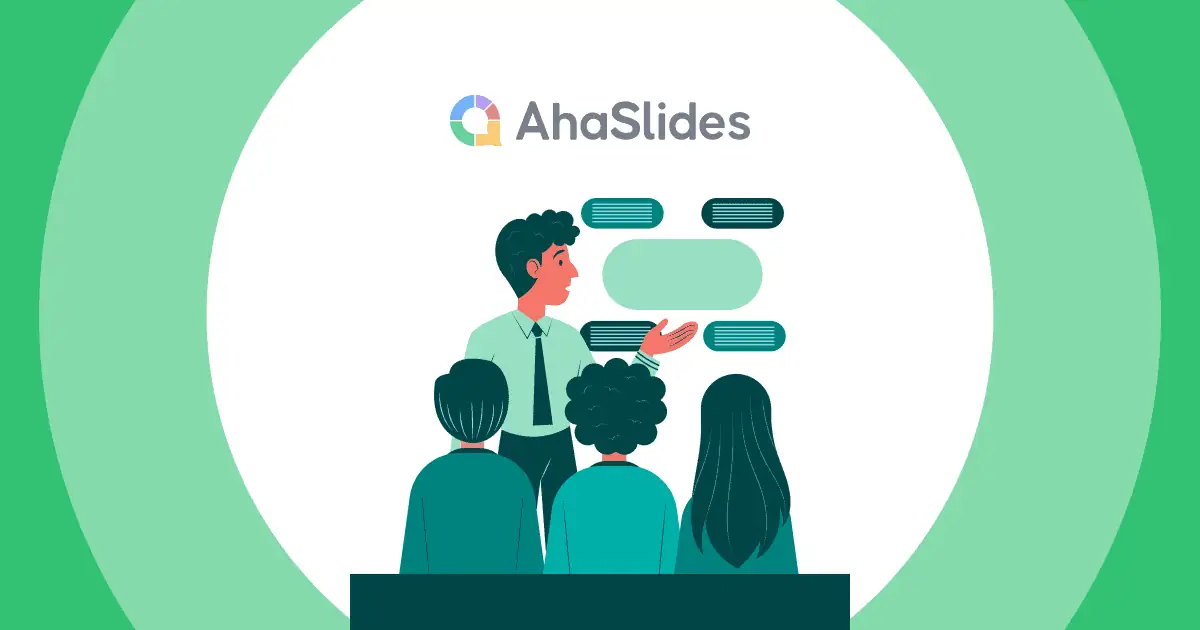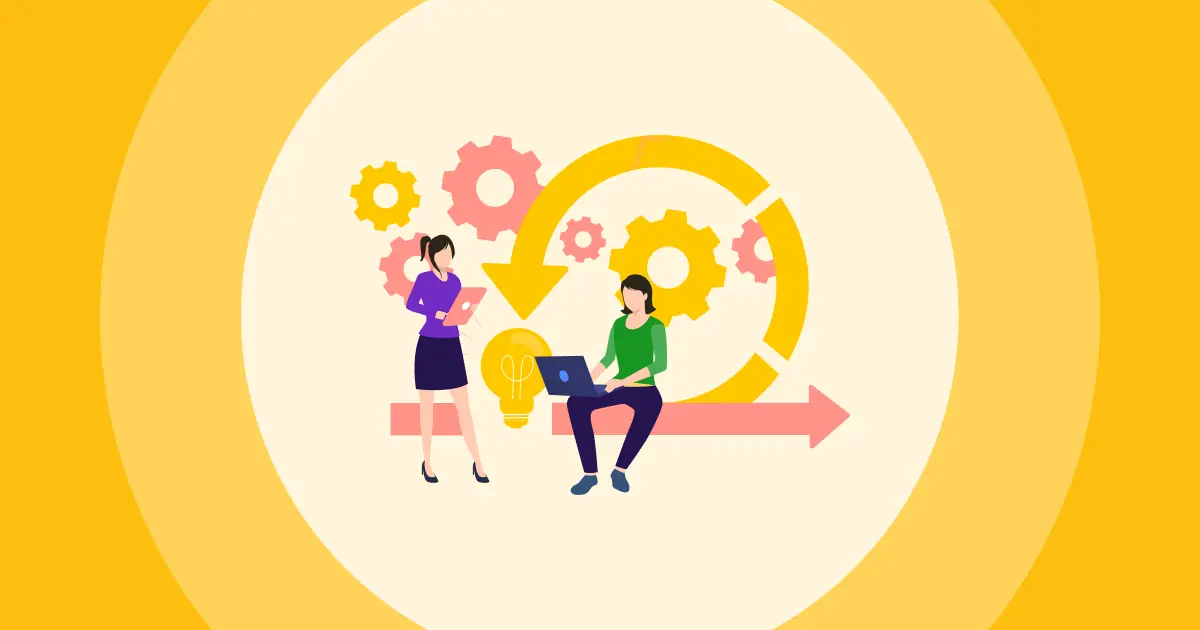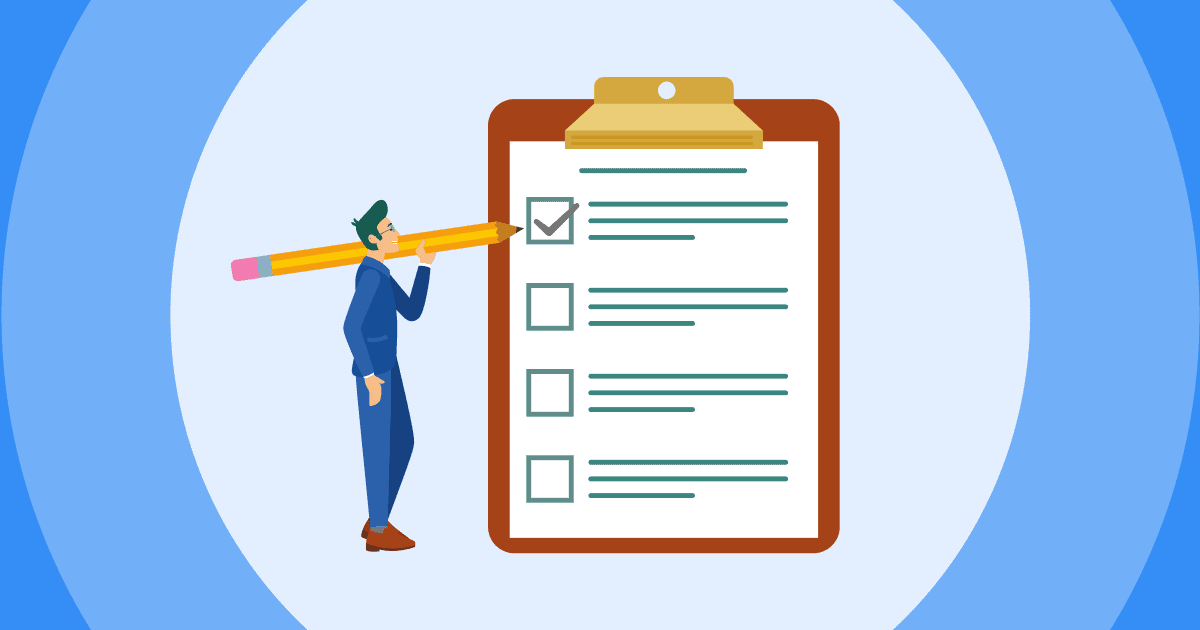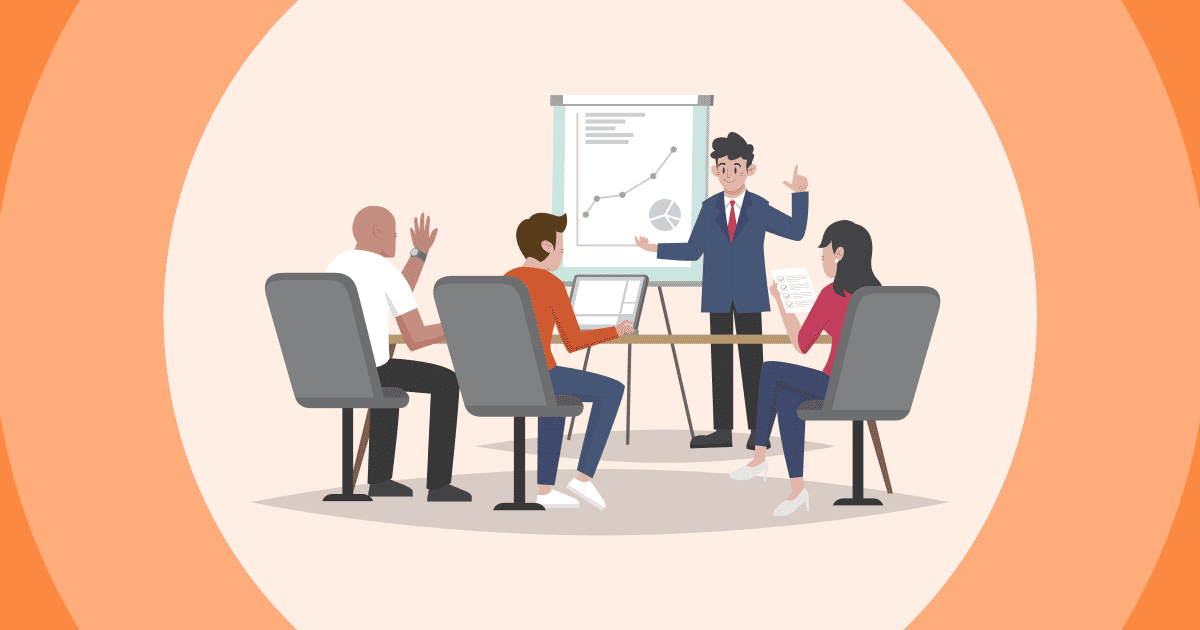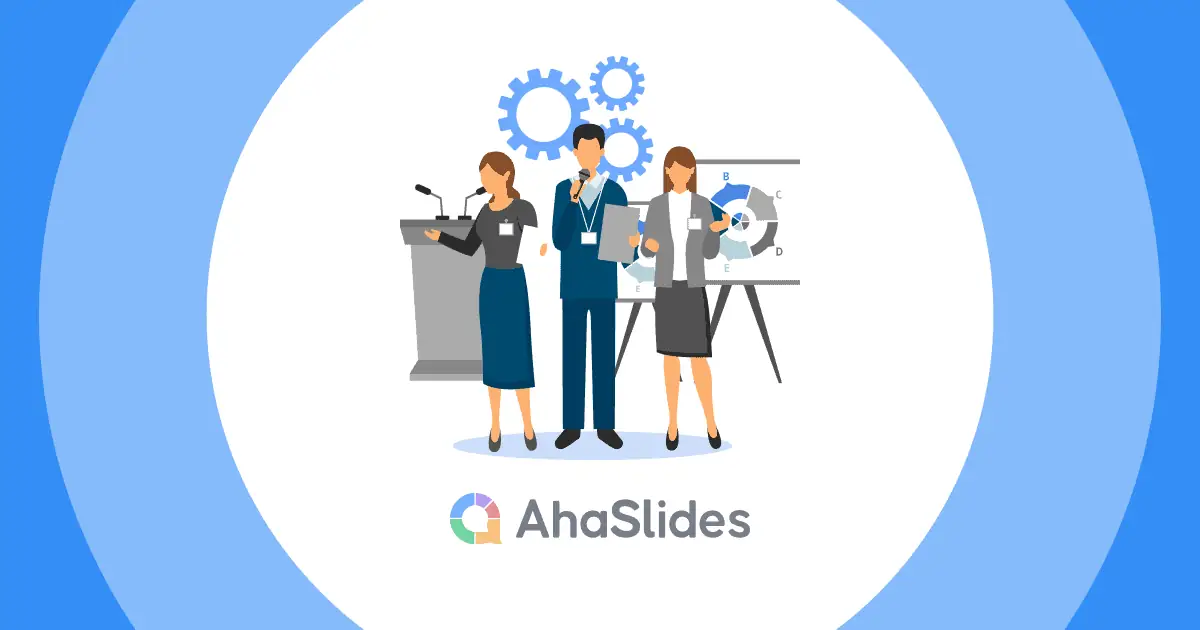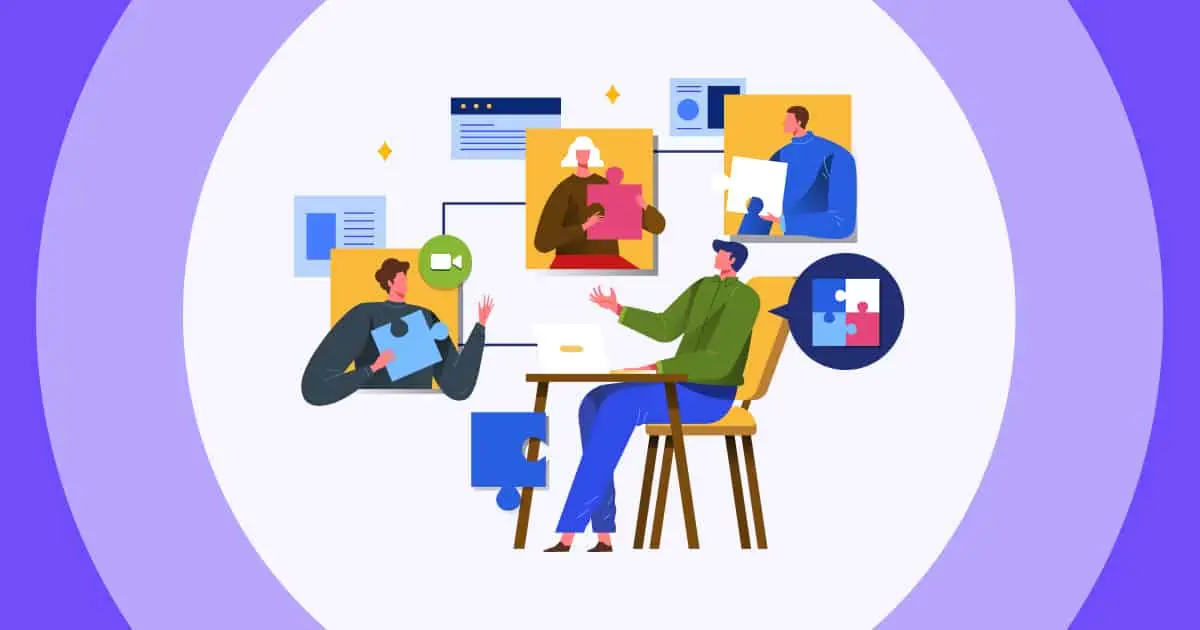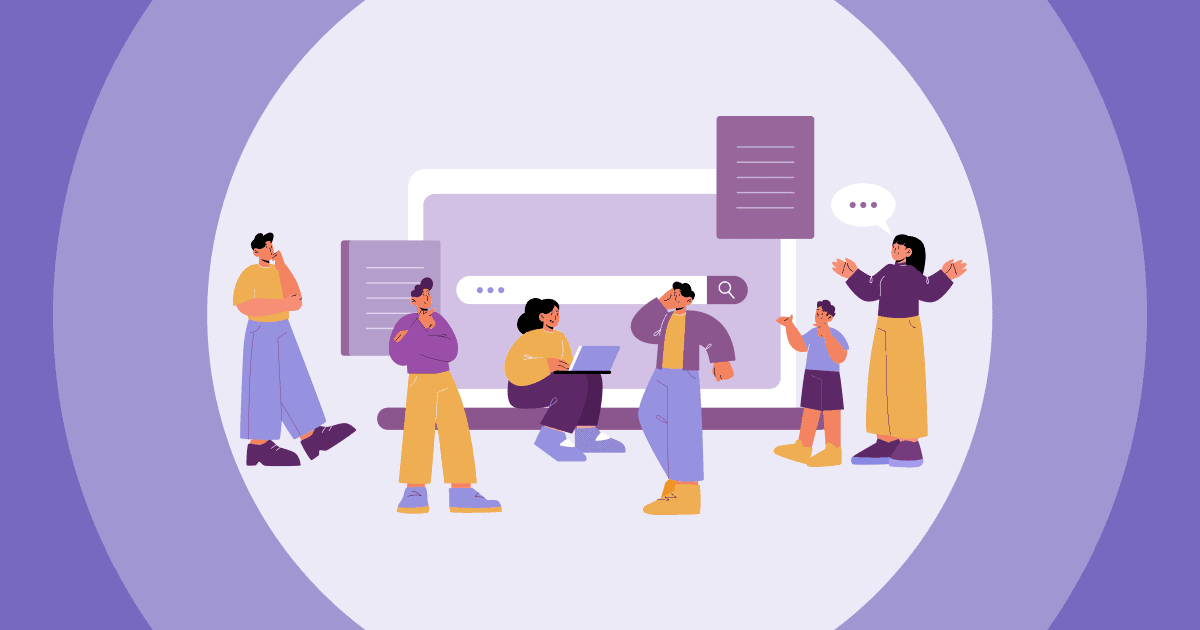역동적인 조직 성공 환경에서 핵심은 지속적인 개선 방법론에 있습니다. 소규모 팀을 이끌든 대기업을 감독하든, 탁월함을 향한 추구는 결코 멈추지 않습니다. 이 블로그 게시물에서는 조직 내에서 혁신, 효율성, 그리고 지속적인 성공을 촉진하는 비결을 밝혀줄 5가지 지속적인 개선 방법론과 8가지 지속적인 개선 도구를 살펴보겠습니다.
차례
지속적인 개선이란 무엇입니까?
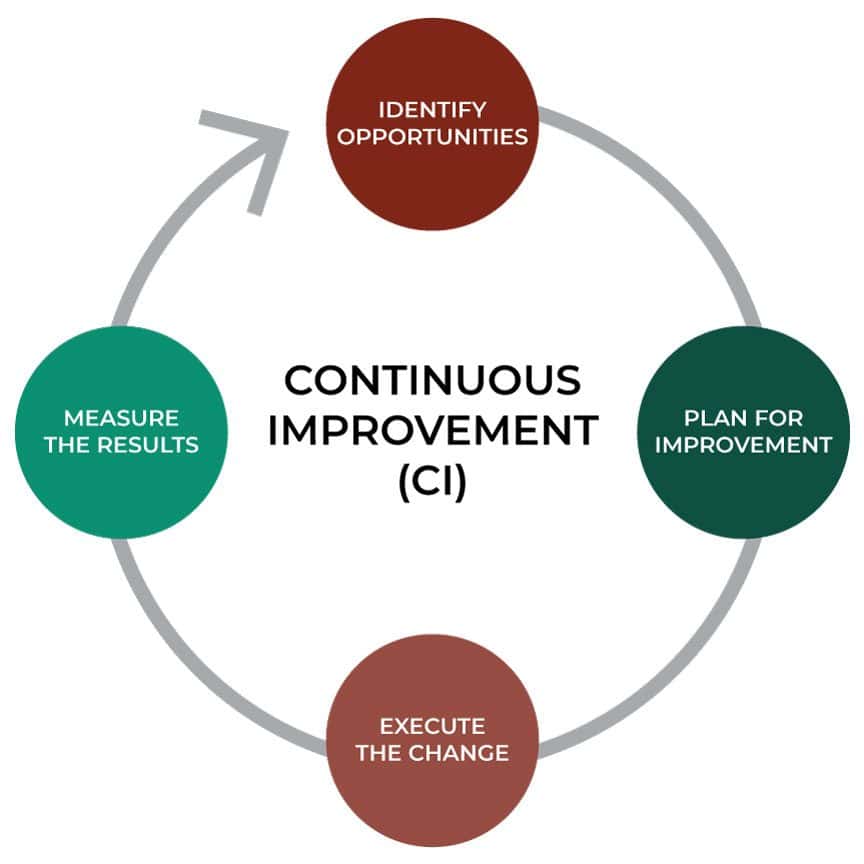
지속적인 개선은 조직 내 프로세스, 제품 또는 서비스를 개선하기 위한 체계적이고 지속적인 노력입니다. 이는 항상 개선의 여지가 있다는 생각을 수용하고, 시간이 지남에 따라 우수성을 달성하기 위해 점진적인 변화를 추구하는 철학입니다.
지속적인 개선의 핵심에는 다음이 포함됩니다.
- 기회 식별: 워크플로 효율성, 제품 품질, 고객 만족도 등 개선이 가능한 분야를 인식합니다.
- 변경: 대대적인 개편을 기다리기보다는 작고 점진적인 변화를 실행하는 것입니다. 이러한 변화는 종종 조직 운영에서 수집된 데이터, 피드백 또는 통찰력을 기반으로 합니다.
- 영향 측정: 변경의 효과를 평가하여 성공 여부를 판단하고 전반적인 개선 목표에 어떻게 기여하는지 이해합니다.
- 적응과 학습: 학습과 적응의 문화를 수용합니다. 지속적인 개선은 비즈니스 환경이 역동적이며 오늘 작동하는 것이 내일 조정이 필요할 수 있음을 인정합니다.
지속적인 개선은 일회성 프로젝트가 아니라 우수성을 향한 장기적인 노력입니다. 이는 린(Lean) 방법론과 같은 다양한 형태를 취할 수 있습니다. 6 시그마 카이젠(Kaizen) 원칙은 지속적인 개선을 위한 체계적인 접근 방식을 제공합니다. 궁극적으로 카이젠은 혁신, 효율성, 그리고 조직이 하는 일에서 더 나아지려는 끊임없는 노력을 장려하는 사고방식을 함양하는 것입니다.
5가지 지속적인 개선 방법론
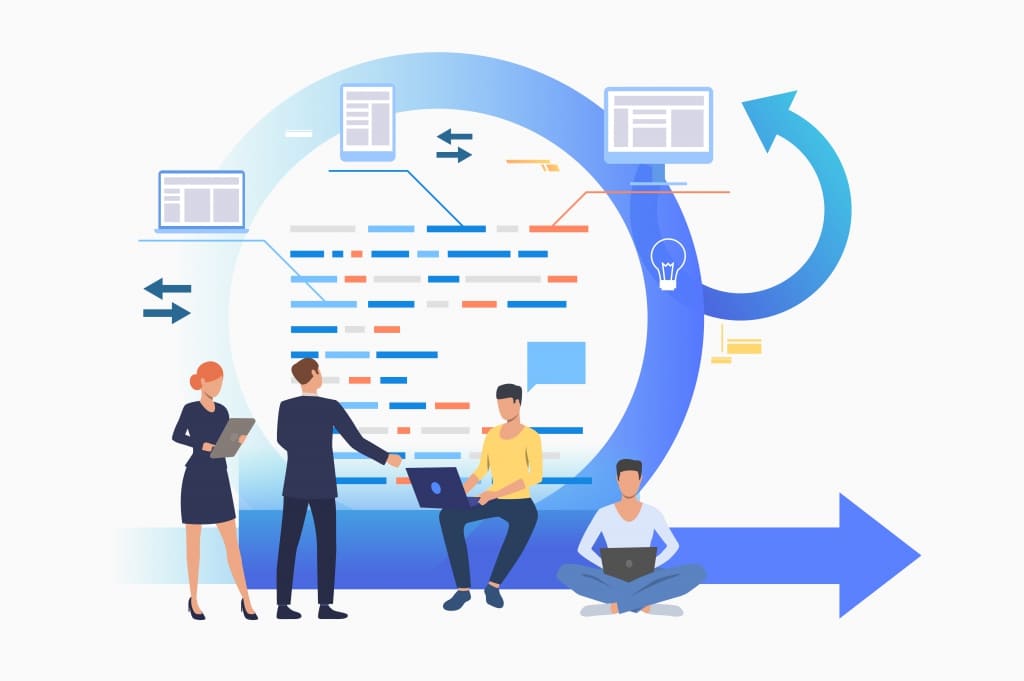
다음은 다양한 산업에서 널리 사용되는 XNUMX가지 지속적인 개선 방법론입니다.
1/ 카이젠(Kaizen) – 지속적인 개선 방법론
카이젠 지속적인 개선 프로세스카이젠(Kaizen)은 "더 나은 변화를 위한 변화"를 뜻하는 일본어로, 작고 점진적인 변화를 중심으로 하는 지속적인 개선 프로세스입니다. 모든 직급의 직원들이 프로세스, 제품 또는 서비스 개선을 위한 아이디어를 내도록 장려함으로써 지속적인 개선 문화를 조성합니다.
2/ 린 제조 – 지속적인 개선 방법론
린 제조의 원칙 낭비를 최소화하고, 지속적인 업무 흐름을 보장하며, 고객에게 가치를 제공하는 데 집중함으로써 운영을 간소화하는 것을 목표로 합니다. 폐기물 감소, 효율적인 프로세스 및 고객 만족이 이 방법론의 핵심입니다.
3/ DMAIC 모델 – 지속적 개선 방법론
DMAIC 모델 (정의, 측정, 분석, 개선, 제어)는 Six Sigma 방법론 내의 구조화된 접근 방식입니다. 여기에는 다음이 포함됩니다.
- 밝히다: 문제 또는 개선 기회를 명확하게 정의합니다.
- 법안: 현재 상태를 수량화하고 기준 지표를 설정합니다.
- 분석 : 문제의 근본 원인을 조사합니다.
- 돌리다: 솔루션 및 개선 사항을 구현합니다.
- 제어: 시간이 지나도 개선 사항이 지속되는지 확인합니다.
4/ 제약 이론 – 지속적인 개선 방법론
제약 이론이란 무엇입니까?? 제약 이론(TOC)은 시스템 내에서 가장 중요한 제한 요소(제약)를 식별하고 해결하는 데 중점을 둡니다. 제약 조건을 체계적으로 개선하거나 제거함으로써 조직은 전체 시스템의 전반적인 효율성과 생산성을 향상시킬 수 있습니다.
5/ 호신칸리 - 지속적 개선 방법론
호신칸리 플래닝은 일본에서 유래된 전략 기획 방법론입니다. 조직의 목표와 일상 활동을 연계하는 것을 포함합니다. 호신칸리는 체계적인 프로세스를 통해 조직 구성원 모두가 공동의 목표를 향해 나아가도록 보장하고, 응집력 있고 목표 지향적인 업무 환경을 조성합니다.
지속적인 개선을 위한 8가지 필수 도구
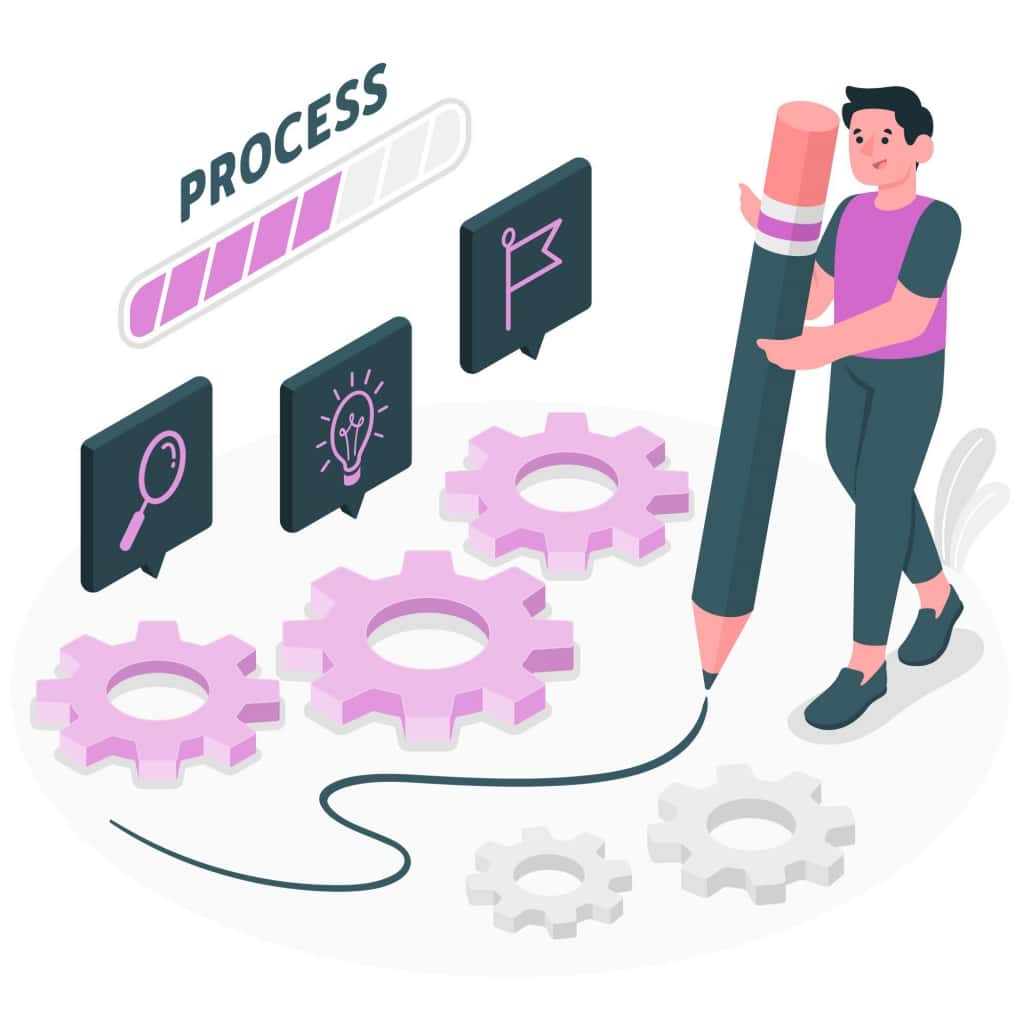
프로세스를 개선하고 향상시킬 준비가 된 지속적인 개선 도구를 손쉽게 탐색해 보세요.
1/ 가치 흐름 매핑
값 스트림 매핑 작업 흐름을 분석하고 개선하기 위해 시각적 표현을 만드는 데 필요한 도구입니다. 처음부터 끝까지 전체 프로세스를 계획함으로써 조직은 비효율성을 식별하고, 낭비를 줄이고, 작업 흐름을 최적화하여 궁극적으로 전반적인 생산성을 향상시킬 수 있습니다.
2/ 젬바 산책
Gemba 걷기란 무엇인가요? 젬바 워크는 실제 작업장, 즉 "젬바"에 직접 가서 프로세스의 실제 상황을 관찰하고, 배우고, 이해하는 활동입니다. 이러한 현장 중심적인 접근 방식을 통해 리더와 팀은 통찰력을 얻고, 개선 기회를 파악하며, 업무에 참여하는 사람들과 직접 소통하여 지속적인 개선 문화를 조성할 수 있습니다.
3/ PDCA 사이클(계획, 실행, 점검, 조치)
The PDCA 사이클 지속적인 개선을 달성하기 위한 필수 도구입니다. 이는 개인과 조직이 다음 네 단계를 통해 문제를 식별하는 데 도움이 됩니다.
- 계획: 문제점을 파악하고 개선방안을 계획합니다.
- 수행 작은 규모로 계획을 테스트해 보는 것부터 시작하는 것이 좋습니다.
- 검사: 결과를 평가하고 데이터를 분석합니다.
- 행위: 결과에 따라 개선 사항을 표준화하거나, 계획을 조정하거나, 규모를 확대하는 조치를 취합니다.
이러한 순환 프로세스는 개선을 위한 체계적이고 반복적인 접근 방식을 보장합니다.
4/ 칸반
Kanban 효율적인 업무 흐름 관리를 도와주는 시각적 관리 시스템입니다. 여기에는 카드나 시각적 신호를 사용하여 프로세스의 여러 단계를 통해 이동하는 작업이나 항목을 나타내는 것이 포함됩니다. Kanban은 작업을 명확하게 시각적으로 표현하고 병목 현상을 줄이며 시스템 내 작업의 전반적인 흐름을 향상시킵니다.
5/ XNUMX시그마 DMAIC
The 6 시그마 DMAIC 방법론은 프로세스 개선을 위한 체계적인 접근 방식입니다. 프로젝트가 원활하게 진행되도록 하려면 체계적인 접근 방식을 따르는 것이 중요합니다.
여기에는
- 문제와 프로젝트 목표를 정의하고,
- 현재 상태를 수량화하고 기준 지표를 설정합니다.
- 문제의 근본 원인을 조사하고,
- 솔루션 및 개선 사항 구현,
- 일관된 품질을 유지하면서 시간이 지나도 개선이 지속되도록 보장합니다.
6/ 근본 원인 분석
근본 원인 분석 방법 단순히 증상을 치료하는 것이 아니라 문제의 근본 원인을 식별하고 해결하는 데 초점을 맞춘 도구입니다. 문제의 근본 원인을 파악함으로써 조직은 보다 효과적이고 지속적인 솔루션을 구현하여 재발을 방지하고 지속적인 개선을 촉진할 수 있습니다.
심플함과 어우러져 근본 원인 분석 템플릿, 이 도구는 문제 조사를 위한 체계적인 프레임워크를 제공합니다. 이는 조직이 문제 해결을 위한 단계별 접근 방식을 취하고 지속적인 개선 문화를 장려하는 데 도움이 됩니다.
7/ 다섯 가지 이유
The XNUMX가지 Why 접근방식 문제의 근본 원인을 깊이 파고드는 간단하면서도 강력한 기법입니다. 핵심 문제가 파악될 때까지 반복적으로(일반적으로 5회) "왜"라는 질문을 던지는 것입니다. 이 방법은 문제의 근본 원인을 밝혀내고, 목표 지향적인 해결책을 도출하는 데 도움이 됩니다.
8/ 이시카와 다이어그램
An 이시카와 다이어그램, 또는 Fishbone 다이어그램은 문제 해결에 사용되는 시각적 도구입니다. 이는 문제의 잠재적인 원인을 물고기 뼈와 유사한 가지로 분류하여 보여줍니다. 이 그래픽 표현은 팀이 문제에 기여하는 다양한 요인을 식별하고 탐색하는 데 도움이 되므로 복잡한 문제를 더 쉽게 이해하고 효과적인 솔루션을 고안할 수 있습니다.
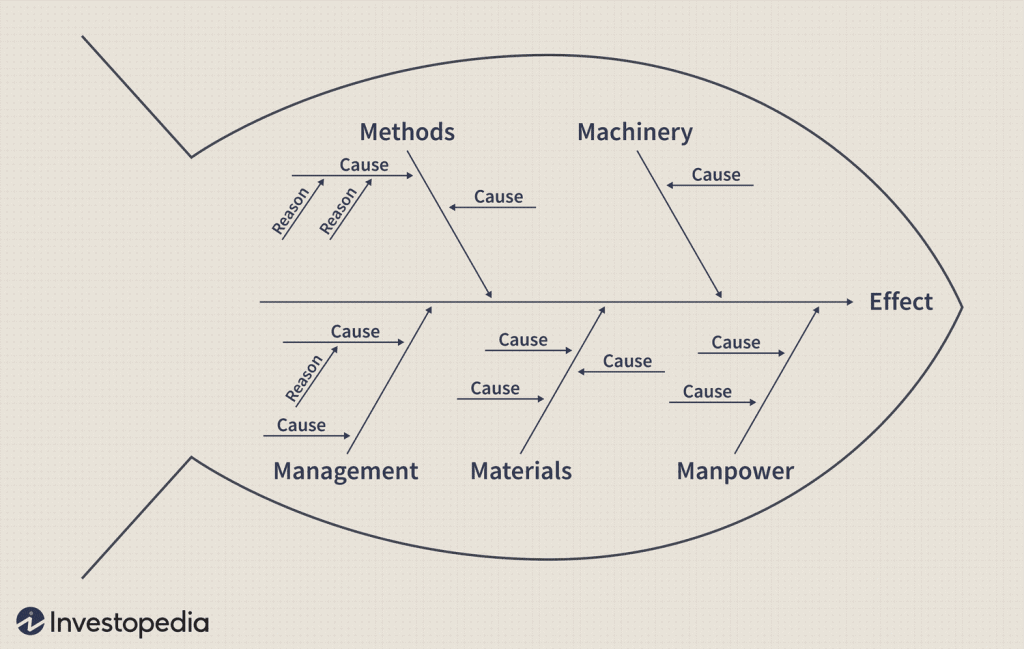
주요 요점
지속적 개선 방법론에 대한 탐구를 마무리하며, 조직 진화의 핵심을 발견했습니다. 카이젠의 작지만 강력한 변화부터 6시그마의 체계적인 접근 방식에 이르기까지, 이러한 지속적 개선 방법론은 지속적인 개선의 틀을 형성합니다.
지속적인 개선 여정을 시작할 때 다음을 사용하는 것을 잊지 마세요. 아하 슬라이드. AhaSlides를 사용하여 대화형 기능 및 맞춤형 디자인 템플릿AhaSlides는 지속적인 개선 문화를 조성하는 데 중요한 도구가 됩니다. 브레인스토밍 세션 진행, 가치 흐름 매핑, 근본 원인 분석 등 어떤 방식으로든 AhaSlides는 지속적인 개선 활동을 효과적일 뿐만 아니라 참여도도 높일 수 있는 플랫폼을 제공합니다.
자주 묻는 질문
지속적인 개선의 4단계는 무엇입니까?
지속적인 개선의 4단계: 문제 식별, 현 상태 분석, 솔루션 개발. 구현 및 모니터링
Six Sigma 지속적인 개선 방법론은 무엇입니까?
XNUMX시그마 지속적인 개선 방법론:
- DMAIC(정의, 측정, 분석, 개선, 제어)
- DMADV(정의, 측정, 분석, 설계, 검증)
지속적인 개선 모델은 무엇입니까?
지속적인 개선 모델: PDCA(Plan, Do, Check, Act), 제약 이론, Hoshin Kanri Planning.

